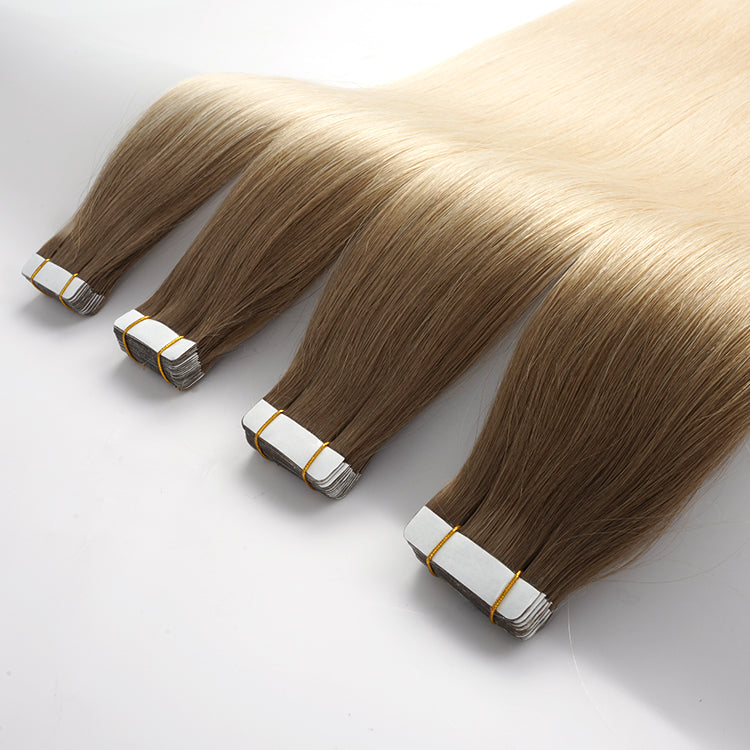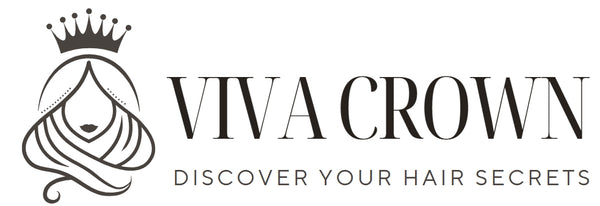
Are Tape in Hair Extensions Good for Thin Hair?
Share
Content Menu
● Understanding Tape In Hair Extensions
● Why Thin Hair Needs Special Care
● Benefits of Tape In Hair Extensions for Thin Hair
>> Versatile Volume and Length
>> Reusable and Cost-Effective
>> Safe Application and Removal
● The Application Process Explained
>> Consultation and Color Matching
● Maintaining Tape In Hair Extensions with Thin Hair
● Styling Ideas and Inspiration
● Expert Tips for Thin Hair Extension Success
● Comparing Tape In Extensions to Other Methods
>> Tape Ins Will Damage Thin Hair
>> All Extensions Work for Thin Hair
● Frequently Asked Questions (FAQs) About Tape In Hair Extensions for Thin Hair
>> 1. Are tape in hair extensions truly safe for thin hair?
>> 2. How often should tape in hair extensions be maintained?
>> 3. Can tape in extensions be styled and colored?
>> 4. Will tape in extensions be visible in very thin hair?
>> 5. What happens if I remove tape in extensions by myself?
Tape in hair extensions have revolutionized the world of hair enhancement, offering customization, comfort, and versatility. If you have thin hair, exploring whether tape in hair extensions are right for you opens doors to new styling possibilities and confidence. With 18 years of precision experience and craftsmanship, BILIKNIFE brings curated advice on the optimal extension solution for delicate hair.

Understanding Tape In Hair Extensions
Tape in hair extensions are comprised of thin wefts of high-quality hair attached to adhesive medical-grade tape. Stylists sandwich small sections of your natural hair between two sticky strips, securing the extension for weeks. Their flat, discreet profile means tape ins sit close to the scalp, blending naturally and providing a comfortable fit.[1][3]
Unlike bulky clips or heat-fused bonds, tape in hair extensions rely on non-invasive attachment, protecting thin and fragile hair from undue stress and breakage. Professional installation ensures that each extension is placed for both style and safety, minimizing the risk of damage.[6]
Why Thin Hair Needs Special Care
Thin or fine hair is more susceptible to breakage and stress. Extension methods that weigh heavily on roots or require aggressive chemicals can exacerbate thinning. For these reasons, tape in hair extensions have become the favored solution for people with delicate strands.[9][1]
Their lightweight construction minimizes pressure on follicles, while their unique adhesive gently secures the extensions without pulling or tearing at the roots. Furthermore, the ability to tailor placement means stylists add fullness exactly where you need it most, whether at the crown, the sides, or the ends.
Benefits of Tape In Hair Extensions for Thin Hair
Lightweight Comfort
Tape-in extensions are incredibly light, causing minimal stress on the scalp and roots. This helps maintain the integrity of every strand, preventing the shedding and splitting often caused by heavier extensions.[3][1]
Invisible, Natural Blend
Experts color-match extensions and place them so tape tabs stay hidden, fusing extension and natural hair into a unified style. This creates the illusion of thicker, fuller hair—even for those with naturally fine locks.[6]
Versatile Volume and Length
Rather than adding the same volume throughout, tape ins offer flexibility. Your stylist can use strategic placement techniques to create gradual layering, smooth transitions, and blend extensions for a personalized effect.
Reusable and Cost-Effective
Modern tape in hair extensions feature reusable hair wefts. With professional maintenance, the adhesive tapes are simply replaced every few weeks, allowing for repeated use without costly new purchases.
Safe Application and Removal
Tape-in hair extensions avoid heat and harsh chemicals, reducing the risk of damage inherent in other methods. When applied and removed by a trained stylist, tape ins protect the existing hair and scalp integrity.[8][1]
Drawbacks to Consider
While generally safe for thin hair, tape in hair extensions have potential downsides:
- Require professional installation and maintenance appointments for longevity and safety[4]
- Slippage, tangling, or visible tapes if incorrectly applied
- Must avoid oil-based or alcohol-based hair products around adhesive sites
- Lifespan per application—4 to 8 weeks—means regular visits for adjustment[2][3]
- DIY removal may result in breakage or damage

The Application Process Explained
Professional application of tape in hair extensions for thin hair involves several distinct steps:
Consultation and Color Matching
A consultation ensures extensions match the color, texture, and desired style. Experts also evaluate whether tape ins are the best solution for your unique hair density and scalp health.
Preparation and Sectioning
Hair is washed without conditioner to ensure a clean, residue-free base for adhesive. The stylist carefully sections hair, leaving enough layers atop extensions to keep tapes hidden.[8]
Attachment Technique
Stylists “sandwich” thin sections of natural hair between two adhesive tabs, applying even tension and alignment for a seamless fit. This method enables close placement without gaps or sticking out, which is key for thin hair styles.[7]
Blending and Trimming
After installation, stylists trim and layer both natural hair and extensions for flawless blending, creating volume and smoothness without looking artificial.
Maintaining Tape In Hair Extensions with Thin Hair
Proper maintenance extends the life of your tape in extensions and keeps both the extensions and your hair healthy:
- Clean Gently: Use sulfate-free shampoos and conditioners, avoiding the tape roots to prevent slippage.[4]
- Brush Carefully: Use a soft, extension-friendly brush; start from the ends and move up, supporting tapes for reduced tension.
- Style Wisely: Extension hair can take heat styling but protect with heat shields and avoid excessive tugging.
- Sleep Safely: Tie hair in loose ponytails or braids to prevent tangling and breakage overnight.
- Regular Upkeep: Schedule professional maintenance every 4-8 weeks for tape change and repositioning.[2]
With careful adherence to these steps, tape in hair extensions will last longer and your thin hair will remain undamaged.
Styling Ideas and Inspiration
Tape in hair extensions open up an array of styling options, allowing thin-haired individuals to experience looks previously out of reach:
- Soft Waves and beachy curls for voluminous bounce
- Half-Up Styles with extra fullness at the crown
- Sleek Ponytails that reveal length and volume
- Layered Looks blending both natural and extension hair for textural dimension
- Boho Braids that hold together with more body and grip
Stylists often recommend mixing extension lengths for a natural gradient effect, adapting placement so every style receives the support it requires.
Expert Tips for Thin Hair Extension Success
- Always seek professional consultation and installation for best results.
- Opt for “mini” or invisible tape wefts for hairlines and fine areas.
- Never apply extensions to weak, damaged, or excessively shedding hair without prior restoration.
- Use extension-safe products for washing and styling; avoid oils near adhesive.
- Never attempt DIY removal; professional removal protects your natural strands and scalp.
- Plan regular maintenance to replace tapes, retighten extensions, and inspect for signs of stress.
Comparing Tape In Extensions to Other Methods
Tape in hair extensions stand out compared to other popular options for thin hair.
|
Method |
Suitability for Thin Hair |
Risk of Damage |
Maintenance |
|
Tape In Extensions |
High – gentle, light |
Very Low |
Professional, 4-8 weeks |
|
Clip In Extensions |
Medium – can be heavy |
Medium |
Easy, daily wear |
|
Microbead/Beaded Row |
Depends on beads, can be light |
Moderate |
6-8 weeks |
|
Bonded/Keratin |
Low – may pull, use heat |
High |
2-3 months |
Tape in hair extensions clearly offer the best mix of safety, invisibility, and comfort for those with fine and thin hair.[1][6]
Common Misconceptions
Tape Ins Will Damage Thin Hair
When installed and cared for professionally, tape ins are among the safest options for fine hair. DIY approaches are typically responsible for damage.
All Extensions Work for Thin Hair
Not true. Clip ins and bonds can cause noticeable stress, breakage, or visibility, while tape ins distribute weight and tension evenly for delicate roots.
Extensions Can't Be Styled
Tape in extensions are surprisingly versatile: waves, straight styles, updos, and braids all work well, as long as you avoid tight pulling and excess heat.
Conclusion
Tape in hair extensions represent the premier solution for thin hair, delivering volume, length, and confidence without compromise. Their lightweight design, seamless integration, and non-damaging adhesive make them superior to other extension methods for fine, fragile strands. When installed and maintained by skilled professionals, tape ins empower users to enjoy healthy, beautiful hair in any style.
BILIKNIFE's expert craftsmanship ensures every extension is perfectly suited to your individual needs, blending innovation and tradition for the best possible results. Ready to experience a hair transformation? Consult our team today and start your journey toward fuller, thicker hair!

Frequently Asked Questions (FAQs) About Tape In Hair Extensions for Thin Hair
1. Are tape in hair extensions truly safe for thin hair?
Yes. Tape in extensions, when professionally installed and maintained, protect the integrity of thin hair and avoid damage caused by other, heavier or more invasive methods.[3][1]
2. How often should tape in hair extensions be maintained?
Plan for maintenance every 4-8 weeks. During these appointments, tapes are replaced and repositioned, ensuring security and hair health.[2][4]
3. Can tape in extensions be styled and colored?
Quality tape in hair extensions can be styled with heat and, in some cases, colored. When coloring, always consult your stylist to avoid affecting the adhesive or damaging the hair.[8]
4. Will tape in extensions be visible in very thin hair?
With correct placement and color-matching, tape in extensions remain invisible and natural. “Mini” tape options are ideal for areas with especially fine hair.[6]
5. What happens if I remove tape in extensions by myself?
DIY removal can result in breakage and scalp injury. It is crucial to work with professionals for both installation and removal to safeguard your hair.[9][8]
Citations:
[1](https://kenneths.com/service-guide/hair/hairextensions/tape-in-extensions-for-thin-hair-a-gentle-and-effective-solution)
[2](https://www.joheartshair.com/blog/the-complete-guide-to-tape-in-hair-extensions)
[3](https://zalahair.com/blogs/guides/beginners-guide-to-hair-extensions-for-fine-hair)
[4](https://foxylocks.com/blog/tape-in-extensions-care/)
[5](https://beauvoirhair.com/blogs/hair-extensions-guide/everything-you-need-to-know-about-tape-in-hair-extensions-a-comprehensive-guide)
[6](https://www.crownextensionstudio.com/blog/the-best-hair-extension-methods-for-thin-hair-a-2025-guide)
[7](https://www.youtube.com/watch?v=ct4QFO04KOs)
[8](https://googoohair.com/blogs/news/how-to-put-in-tape-in-hair-extensions-at-home)
[9](https://platformhairextensions.com/blogs/news/best-hair-extensions-for-fine-hair)
Hot tags: Tape In Extensions For Thin Hair, Best Extensions For Fine Hair, Volumizing Tape Ins, Lightweight Tape Extensions, Hair Extensions For Thin Strands, Gentle Tape In Methods, Natural Look Extensions, Hair Volume Solutions, Flat Tape In Extensions, Boost Thin Hair Volume
